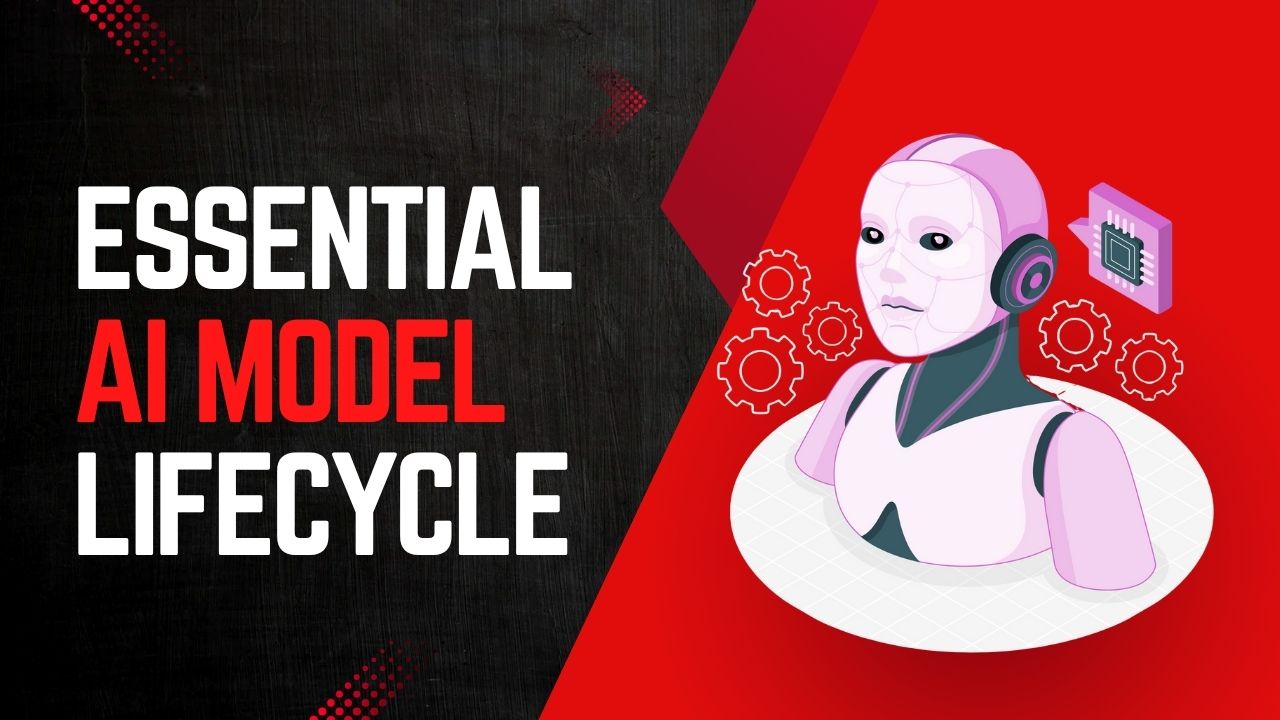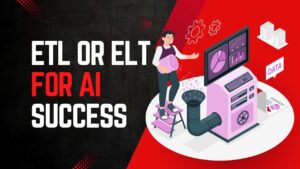Introduction
Hey there! If you’ve noticed how Artificial Intelligence (AI) is popping up everywhere—from suggesting your next Netflix show to helping businesses run smoothly—you’re not alone. AI is changing the way we live and work, and it’s an exciting time to learn how these smart systems are built and managed. Today, I’m going to walk you through the AI model life cycle, step by step, from the moment we dream up an idea to the time we say goodbye to the model.
Think of it as the life story of an AI model, told in a way that’s easy to follow, with examples, analogies, and even a bit of code to make it fun. By the end, you’ll know how to create AI that’s not just powerful but also safe and trustworthy. Ready? Let’s dive in!
On This Page
Table of Contents
Planning: Setting the Stage
Imagine you’re planning a big family picnic. Before anything else, you need to figure out where you’re going, who’s coming, and what food to bring. The same goes for building an AI model—planning is the first step, and it’s all about deciding what you want your AI to do and how it should work.
Let’s say we want to create an AI that helps people whip up tasty recipes from scratch. We don’t want it suggesting something crazy like glue instead of butter, so we need to be clear about its job. Here’s what we think about:
- What’s the Goal? Our AI should be a friendly kitchen helper, giving users step-by-step recipe ideas.
- Who’s Using It? Home cooks, foodies, maybe even beginner chefs.
- Ethics and Trustworthiness: We want it to be safe, fair, and respect people’s privacy—no weird suggestions or biased recipes!
Good planning is the heartbeat of any AI project. Without it, you’re just guessing in the dark.
Real-World Analogy
Planning an AI model is like mapping out a road trip. You pick your destination (the goal), pack the right gear (data), and make sure everyone’s on board with the plan (ethics). Without this, you might end up lost—or worse, stuck with a car full of glue instead of snacks!
Data Preparation: Getting the Ingredients Ready
Now that we’ve got a plan, it’s time to gather and prep the data—the raw materials that make our AI smart. Think of this like getting ready to cook a meal. You wouldn’t start with dirty veggies or missing spices, right? Good AI needs good data, cleaned up and ready to go.
For our recipe AI, we’ll need:
- Conversations about cooking (so it can chat naturally).
- Recipes from trusted cookbooks or websites.
- Tips on cooking techniques (like how to chop an onion without crying).
Steps to Prep the Data
- Collect It: Grab data from diverse sources—Italian pasta recipes, Indian curries, American desserts—to make sure it’s well-rounded.
- Clean It: Remove anything personal (like names or addresses), get rid of duplicates, fill in missing bits, and make everything look the same (e.g., all measurements in cups, not grams).
- Check for Bias: If we only have Italian recipes, our AI might ignore other cuisines. We can create fake (synthetic) data to balance it out if needed.
Coding Example: Cleaning Data with Python
Here’s a quick peek at how we might clean up our recipe data:
import pandas as pd
# Load our messy recipe data
data = pd.read_csv("recipes.csv")
# Drop duplicates (no repeat recipes!)
data = data.drop_duplicates()
# Make all ingredient names lowercase for consistency
data["ingredients"] = data["ingredients"].str.lower()
# Save the cleaned-up version
data.to_csv("clean_recipes.csv", index=False)Real-World Analogy
Prepping data is like getting your kitchen ready for a big meal. You wash the veggies, toss out anything spoiled, and measure your spices. In AI, you’re making sure the data is fresh, clean, and ready to cook up something amazing.
Model Development: Building the Machine
With our data prepped, it’s time to build the model—the brain of our AI. This is like assembling a car engine: you need the right parts and a smart design to make it run smoothly.
For our recipe helper, we’ll use a transformer architecture, which is awesome for understanding and generating text—like a super-smart librarian who can write books too. We might also mix in a mixture of experts, where smaller models team up—one expert for baking, another for grilling—to make it faster and cheaper to run.
Key Pieces of Model Development
- Algorithms: The math that makes the AI think. Transformers are our go-to here.
- Architecture: How the model is structured. A mixture of experts is like having a team of chefs instead of one overwhelmed cook.
- Balance: We want it to be smart but not so heavy it crashes your computer.
Building an AI model is like crafting a tool—it’s got to fit the job perfectly.
Real-World Analogy
Developing a model is like building a house. You need a strong foundation (data), the right blueprints (architecture), and quality materials (algorithms) to make it a home worth living in.
Evaluation and Validation: Testing the Waters
Before we let our AI loose, we need to test it—like taking a new bike for a spin to make sure it doesn’t wobble. Evaluation and validation ensure our model works well and treats everyone fairly.
For our recipe AI, we check:
- Accuracy: Does it suggest real recipes, not gibberish?
- Fairness: Does it offer ideas for all kinds of diets and cultures?
- Weird Scenarios: What if someone asks for a recipe with no stove?
How We Test It
- Governance Board: Set up a team to make sure it follows rules (like the EU AI Act).
- Performance Tests: Try it with different users and see how it holds up.
- Fix Problems: If it’s biased toward desserts, we tweak it or add more savory recipe data.
Table: Testing Metrics
| Metric | What It Means |
|---|---|
| Accuracy | How often it gets things right. |
| Fairness | Does it treat all groups equally? |
| Robustness | Can it handle oddball requests? |
Testing an AI is like taste-testing a cake. You check if it’s sweet enough, not too dry, and safe to eat. For AI, we’re tasting for accuracy, fairness, and strength under pressure.
Deployment: Launching the Rocket
Our model’s ready—time to deploy it! This is like launching a rocket: you’ve built it, tested it, and now it’s blasting off to do its job.
For our recipe AI, we:
- Pick a cloud platform (like AWS or Google Cloud) to host it.
- Set up storage (for recipes), compute (to think), and networking (to talk to users).
- Containerize it with Docker so it’s easy to move and run.
Coding Example: Docker Setup
FROM python:3.8-slim
WORKDIR /app
COPY . /app
RUN pip install -r requirements.txt
EXPOSE 80
CMD ["python", "recipe_ai.py"]Deploying is like opening a lemonade stand. You’ve made the lemonade (model), set up your table (infrastructure), and now you’re ready to serve customers (users). Make it quick and tasty—or in AI terms, fast and reliable!
Monitoring and Maintenance: Keeping It Running
Once our AI is out there, we can’t just forget it. Monitoring and maintenance keep it sharp, like tuning up a car to keep it purring.
For our recipe AI:
- Watch for drift—if users start asking for vegan recipes but it’s stuck on meat dishes, it’s drifting.
- Check performance metrics like speed and error rates.
- Retrain it with new data (like trendy recipes) every few months.
Key Ideas
- Drift: When the world changes but the model doesn’t.
- Metrics: Numbers that tell us if it’s fast, accurate, or broken.
Maintaining an AI is like tending a garden. You water it (retrain), pull weeds (fix issues), and watch for bugs (monitor drift) to keep it growing strong.
Retirement: Saying Goodbye
Eventually, our AI might outlive its usefulness—time for retirement. Think of it like retiring an old bike: you don’t toss it; you store it for memories or spare parts.
For our recipe AI, we retire it if:
- People want healthier recipes, and it’s stuck on fried foods.
- A newer, shinier model comes along.
What We Do
- Archive It: Save the code and data for later.
- Reuse Parts: Maybe the baking expert can help a new model.
Retiring an AI is like putting away a favourite cookbook. You might not use it daily, but you keep it around for nostalgia or to inspire new recipes.
Conclusion
There you have it—the AI model life cycle from start to finish! We’ve covered planning (dreaming it up), data preparation (getting the goods), model development (building it), evaluation and validation (testing it), deployment (launching it), monitoring and maintenance (keeping it alive), and retirement (letting it rest). With careful steps, we can create AI that’s helpful, fair, and trustworthy.
So, what kind of AI would you build? Maybe a music maker or a travel planner? The possibilities are endless, and now you’ve got the roadmap to make it happen.
Happy building!

FAQs
What’s the first thing you do when building an AI model?
The first step is planning. It’s like deciding what kind of cake you want to bake before you start mixing ingredients. You figure out what problem the AI will solve (like helping people find recipes), who will use it (like home cooks), and how to make it safe and fair. A good plan sets the stage for everything else.
Why is planning so important for AI?
Planning is like drawing a map before a road trip. Without it, you might get lost or end up somewhere you didn’t want to go. A clear plan helps you choose the right data, tools, and goals, saving time and ensuring the AI does what it’s supposed to do without causing problems.
What kind of information does an AI model need?
An AI needs data to learn, just like a student needs books. The data should match the AI’s job. For example, if you’re making an AI to suggest recipes, you need data about ingredients, cooking steps, and maybe even user preferences. It’s best to use diverse, trustworthy data to make the AI helpful for everyone.
Why does the data need to be good quality?
Good data is like fresh ingredients for cooking—if you use spoiled food, the dish won’t taste right. If the data is messy, incomplete, or biased, the AI might give wrong or unfair answers. For example, if a recipe AI only knows about Italian food, it won’t help people who want Indian dishes. Clean, balanced data makes the AI reliable.
What kinds of AI models are there?
There are a few main types of AI models, each like a different tool for a job:
Supervised Learning: Like teaching a kid by showing examples (e.g., “this is a cat, this is a dog”).
Unsupervised Learning: Like letting the AI explore data to find patterns on its own.
Reinforcement Learning: Like training a pet with rewards for good behavior and corrections for mistakes.
Each type is used for different tasks, like recognizing pictures or making decisions.
How do you pick the right method for building an AI model?
Choosing the right method, or algorithm, is like picking the right tool for a project. You look at what you’re trying to do and what data you have. For example, if you have examples with clear answers (like labeled photos), you might use supervised learning. If you’re exploring data without labels, unsupervised learning could be better. It’s about matching the tool to the task.
How do you check if an AI model is working right?
You test it, like tasting a cake to see if it’s baked properly. You give the AI new data it hasn’t seen before and check how well it performs. For example, you might see how often it gets answers right (accuracy) or if it handles tricky situations well. You also make sure it’s fair and doesn’t favour one group over another.
Why is checking for bias and fairness important?
Testing for bias and fairness is like making sure a game is fair for all players. If an AI is biased, it might treat some people unfairly—like a hiring AI that only picks certain types of candidates. Checking for bias ensures the AI is trustworthy and follows ethical and legal rules.
What does it mean to deploy an AI model?
Deploying an AI model is like opening a new store—it’s when the AI starts working in the real world. For example, a recipe AI might go live on a website where people can ask for cooking ideas. It’s the moment the AI goes from being a project to being useful for people.
What are some challenges when launching an AI model?
Launching an AI can be tricky, like opening a restaurant on a busy day. Some challenges include:
Making sure it works on different devices (like phones or computers).
Handling lots of users without slowing down.
Keeping it secure so no one can hack it.
Ensuring it stays accurate as new data comes in.
Why do you need to keep an eye on AI models after they’re launched?
AI models need monitoring because the world changes, and they need to keep up. It’s like checking your car regularly to make sure it runs smoothly. If you don’t watch the AI, it might start giving wrong answers as new trends or data appear, like a recipe AI missing out on new food fads.
What is model drift, and how do you fix it?
Model drift is when an AI starts performing poorly because the data it was trained on is outdated. Imagine a weather app that doesn’t know about new climate patterns—it’s not as helpful anymore. To fix it, you can retrain the AI with fresh data or tweak its settings to match the new reality.
How often should you update or retrain an AI model?
How often you retrain an AI depends on how fast things change. For example, a recipe AI might need updates every few months to include new food trends, while a weather AI might need more frequent updates. It’s like updating your phone’s apps—some need it often, others less so, depending on how critical they are.
When should you stop using an AI model?
You retire an AI model when it’s no longer useful, like retiring an old phone. This might happen if:
The problem it solves isn’t relevant anymore (e.g., people don’t need the same recipes).
A better, newer model comes along.
It’s too expensive or risky to keep running.
What happens to an AI model after it’s retired?
When an AI is retired, it’s not just thrown away. It’s usually archived, like storing an old family recipe book. You save the model’s code, data, and notes in a secure place. This helps if you need to check it later for legal reasons or to reuse parts for a new AI.








